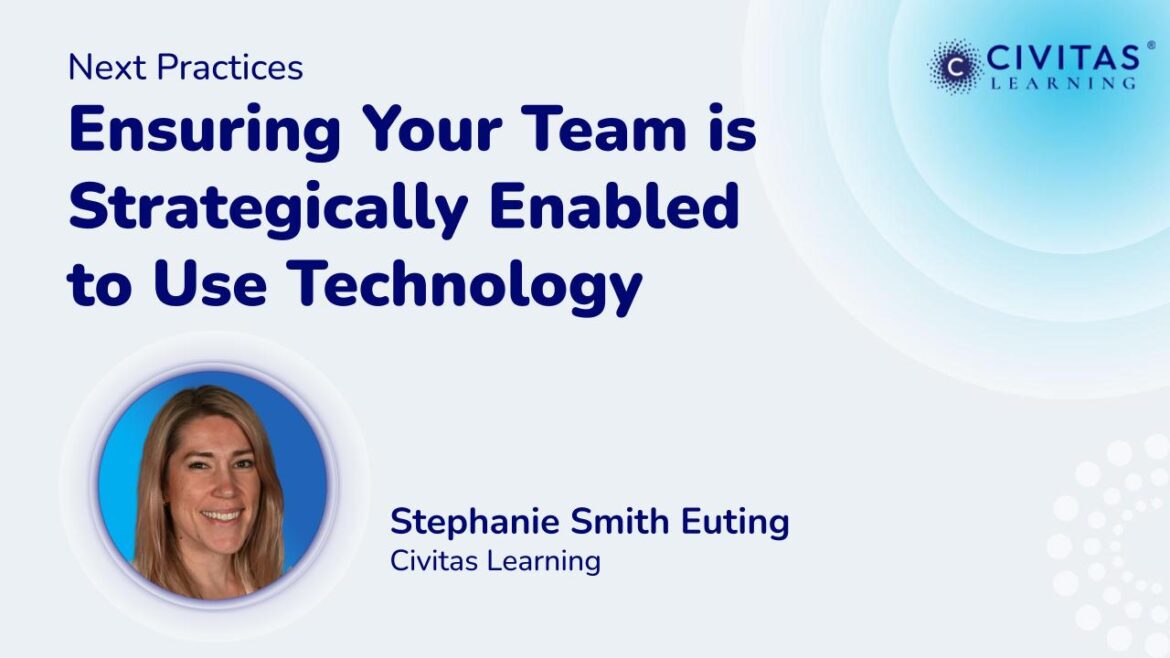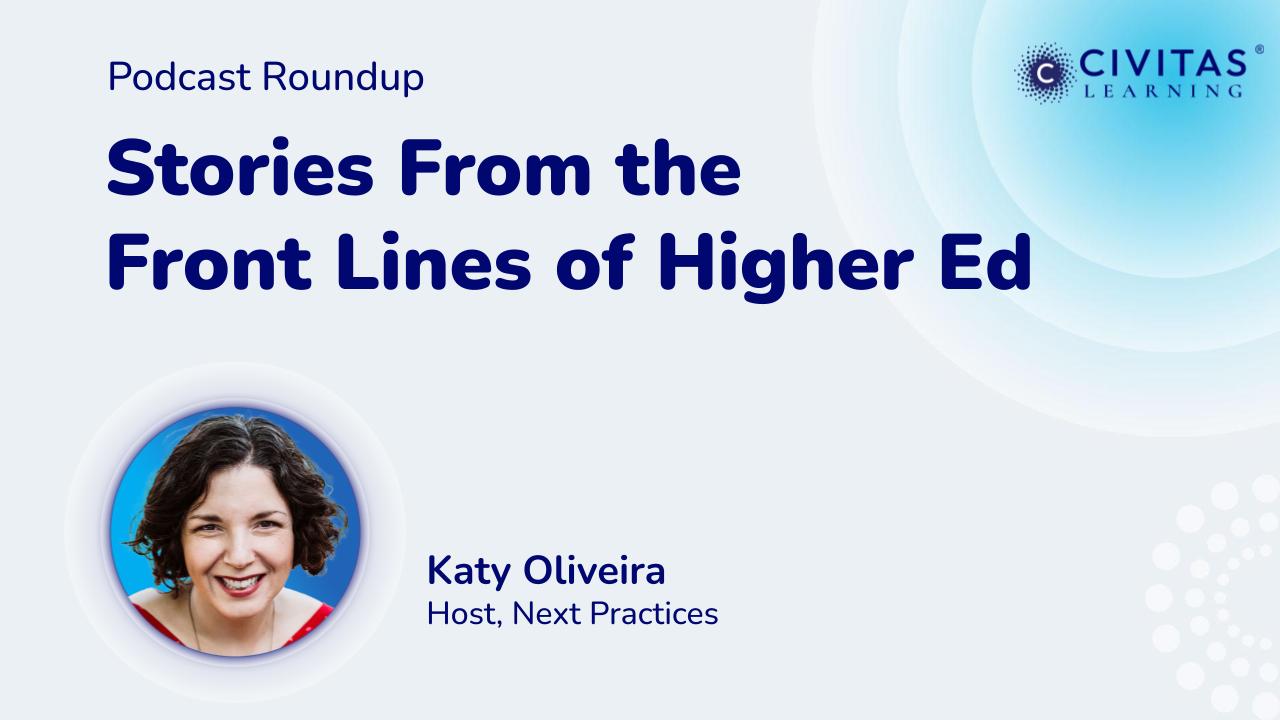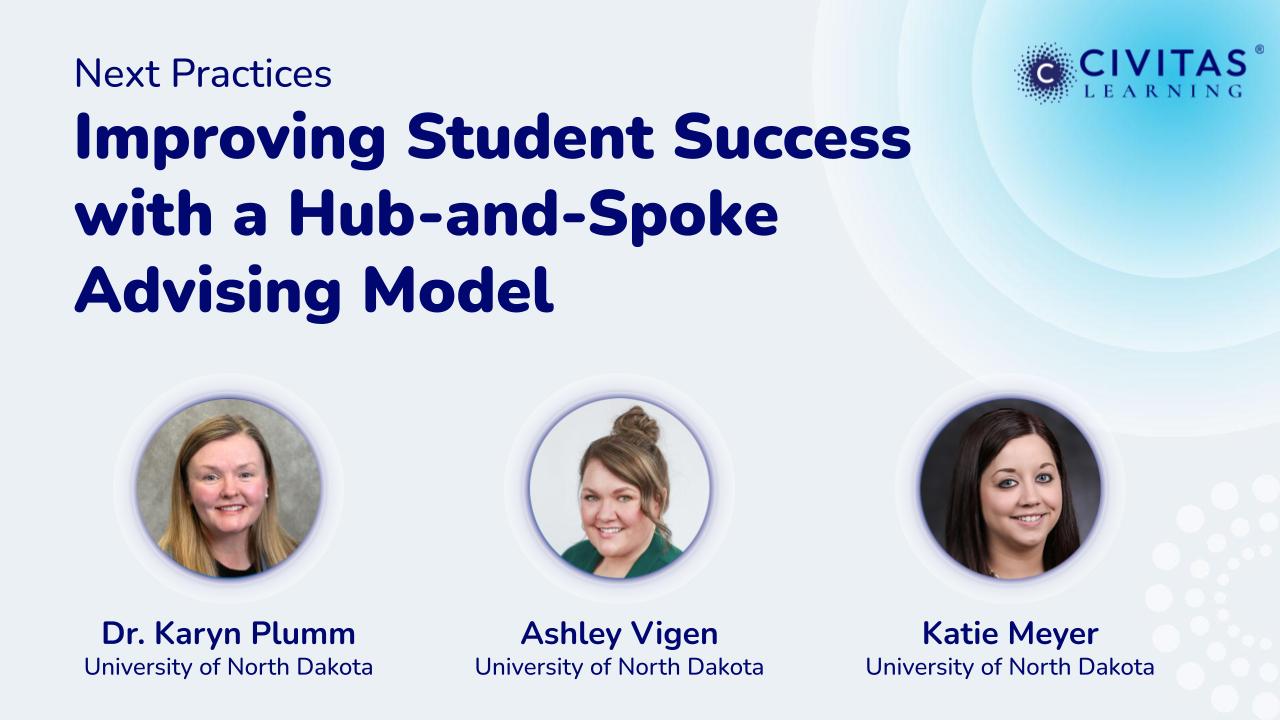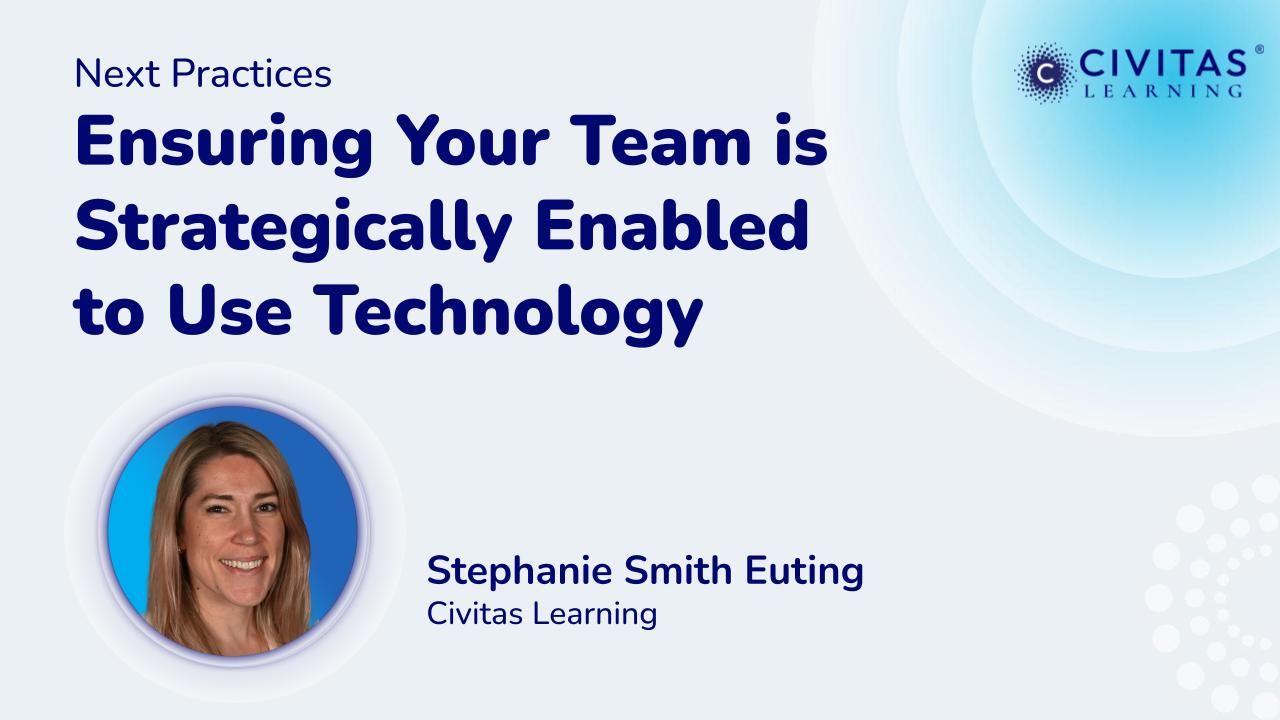
Ensuring Your Team is Strategically Enabled to Use Technology
Share this Post
Subscribe: Spotify | Apple Podcasts | Youtube Music | Transcript
Introducing new technology into an institution is only the first step. Ensuring that teams are prepared to use it in ways that align with strategic goals is where the real work begins. Strategic enablement is more than teaching users where to click—it’s about equipping people to apply data and tools thoughtfully, effectively, and consistently to support long-term student success.
In this episode of Next Practices, Stephanie Smith Euting, Director of Strategic Enablement at Civitas Learning, shares how she helps institutions turn software adoption into measurable impact. With nearly 20 years of experience in higher education and edtech, Stephanie offers a practical framework for moving beyond one-time training to create ongoing strategies that support people, processes, and priorities.
“Training shows you what to do. Strategic enablement shows you why—and ensures you can keep doing it well, long after the launch.”
Smith Euting explains the difference between functional training and strategic enablement, the importance of securing quick wins, and how to plan for long-term engagement. She also dives into common pitfalls that derail technology rollouts—from siloed teams to lack of workflow integration—and offers real-world advice for creating a culture of continuous learning.
Key Takeaways You Can Apply Today
- Anchor in the “Why”
Before rolling out any tool, align leaders and cross-functional teams on the problem you’re solving and how success will be measured. “When people understand the why, the how comes much more naturally.” - Start with Quick Wins
Identify one or two high-impact use cases to demonstrate immediate value. Use early successes to build momentum for broader adoption. - Crawl, Walk, Run
Don’t overwhelm staff with every feature at once. Roll out capabilities in phases, reinforcing skills and expanding functionality over time. - Integrate Data into Daily Workflows
Embed real-time insights—like predictive analytics on persistence risk — directly into staff processes so they can act quickly. - Reinforce and Repeat
Schedule ongoing workshops, refreshers, and cross-team knowledge sharing to make enablement part of your institutional culture. - Partner for the Long Term
Choose vendors who go beyond delivery to offer strategic collaboration, not just technical support.
Whether you’re launching a new platform or maximizing existing tools, this conversation shows how a focused enablement strategy can help your institution get the most out of its technology investments, and create lasting change.
Listen to the full episode and explore how strategic enablement can move your technology from adoption to impact.



